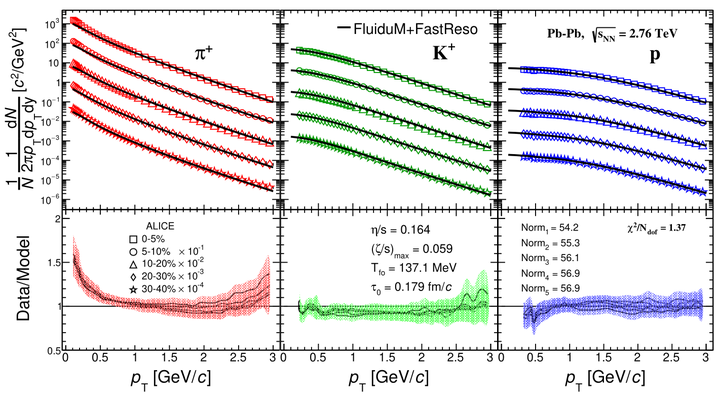Global fluid fits to identified particle transverse momentum spectra from heavy-ion collisions at the Large Hadron Collider

Abstract
Transverse momentum spectra of identified particles produced in heavy-ion collisions at the Large Hadron Collider are described with relativistic fluid dynamics. We perform a systematic comparison of experimental data for pions, kaons and protons up to a transverse momentum of 3 GeV/$c$ with calculations using the FluiduM code package to solve the evolution equations of fluid dynamics, the TrENTo model to describe the initial state and the FastReso code to take resonance decays into account. Using data in five centrality classes at the center-of-mass collision energy per nucleon pair $\sqrt{s_{NN}}=2.76~\text{TeV}$, we determine systematically the most likely parameters of our theoretical model including the shear and bulk viscosity to entropy ratios, the initialization time, initial density and freeze-out temperature through a global search and quantify their posterior probability. This is facilitated by the very efficient numerical implementation of FluiduM and FastReso. Based on the most likely model parameters we present predictions for the transverse momentum spectra of multi-strange hadrons as well as identified particle spectra from Pb-Pb collisions at $\sqrt{s_{NN}}=5.02~\text{TeV}$.